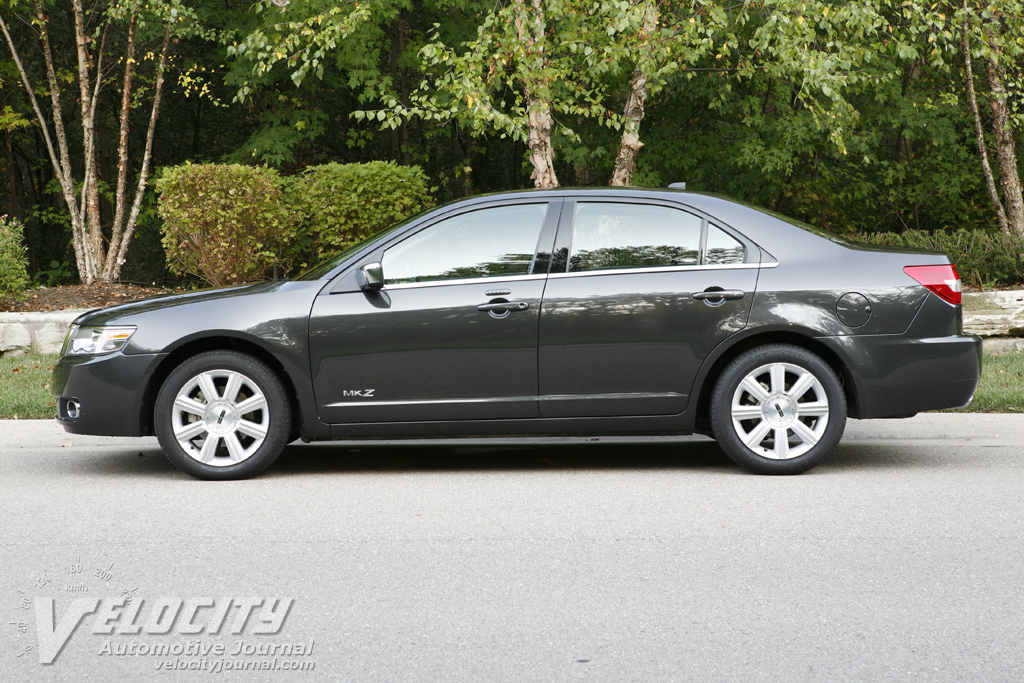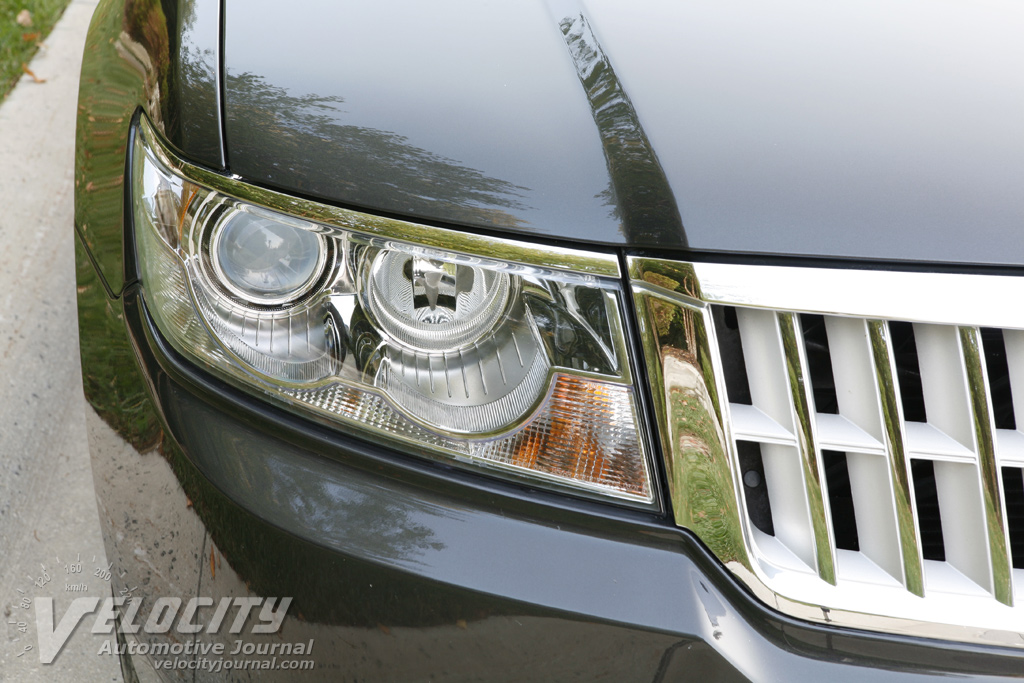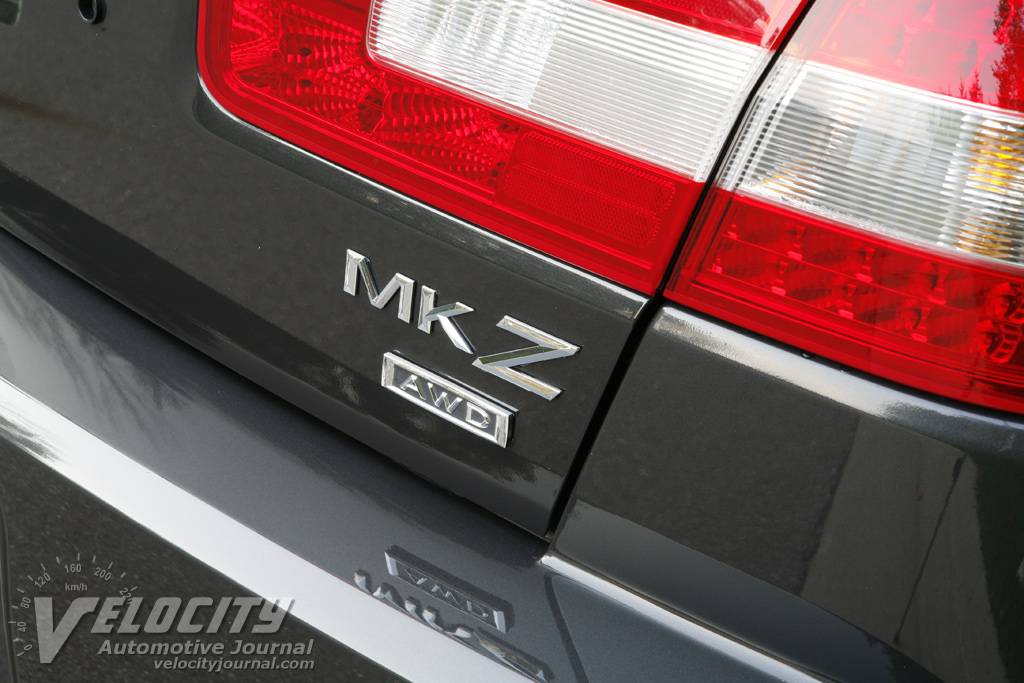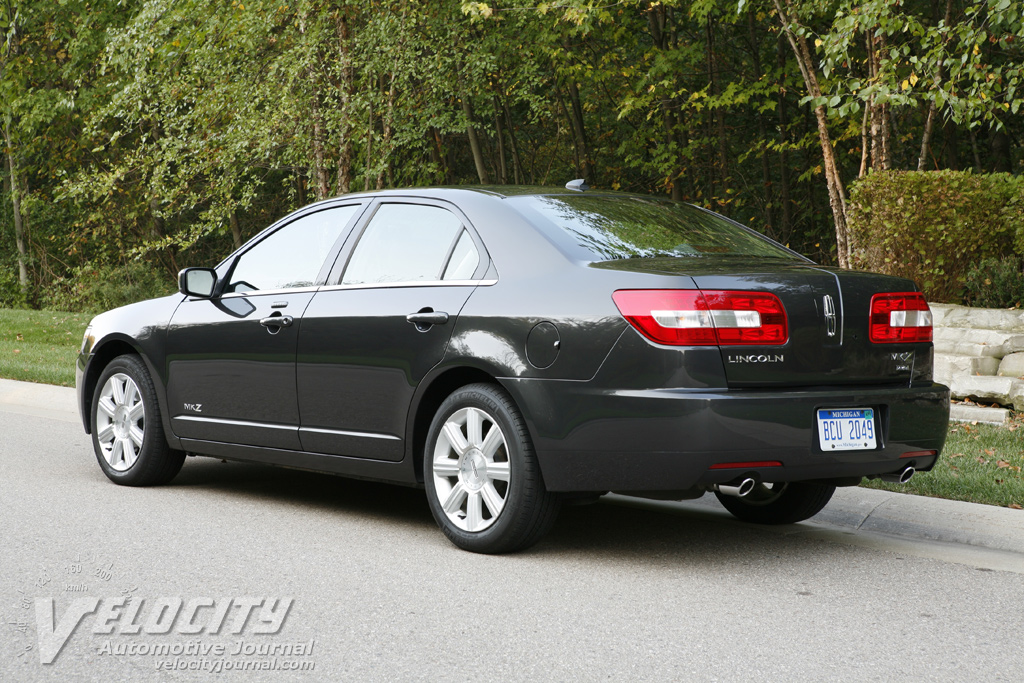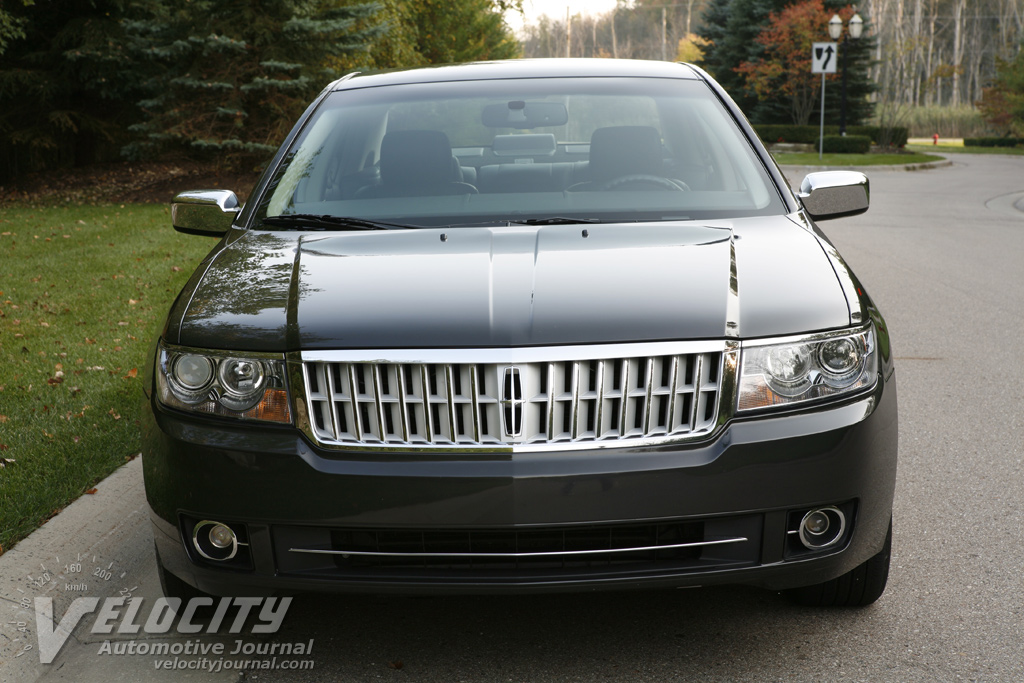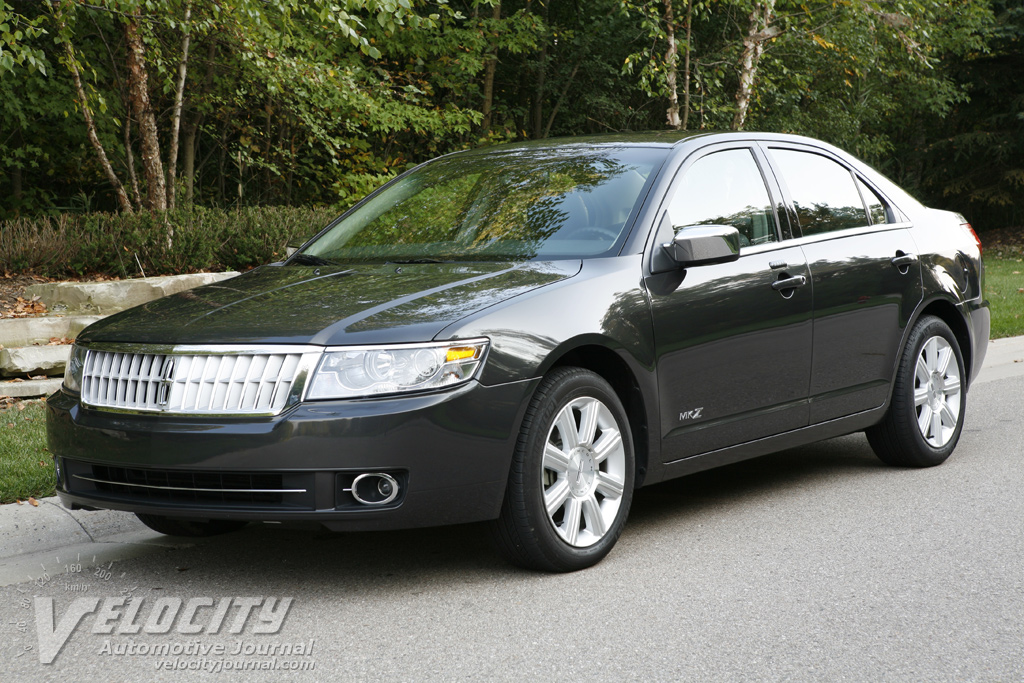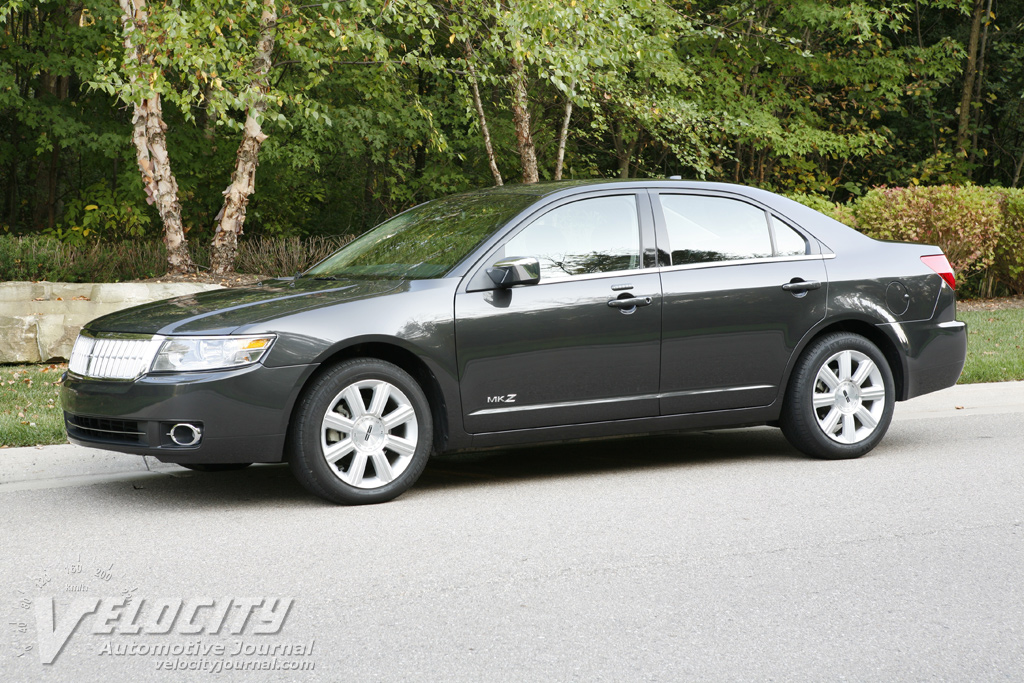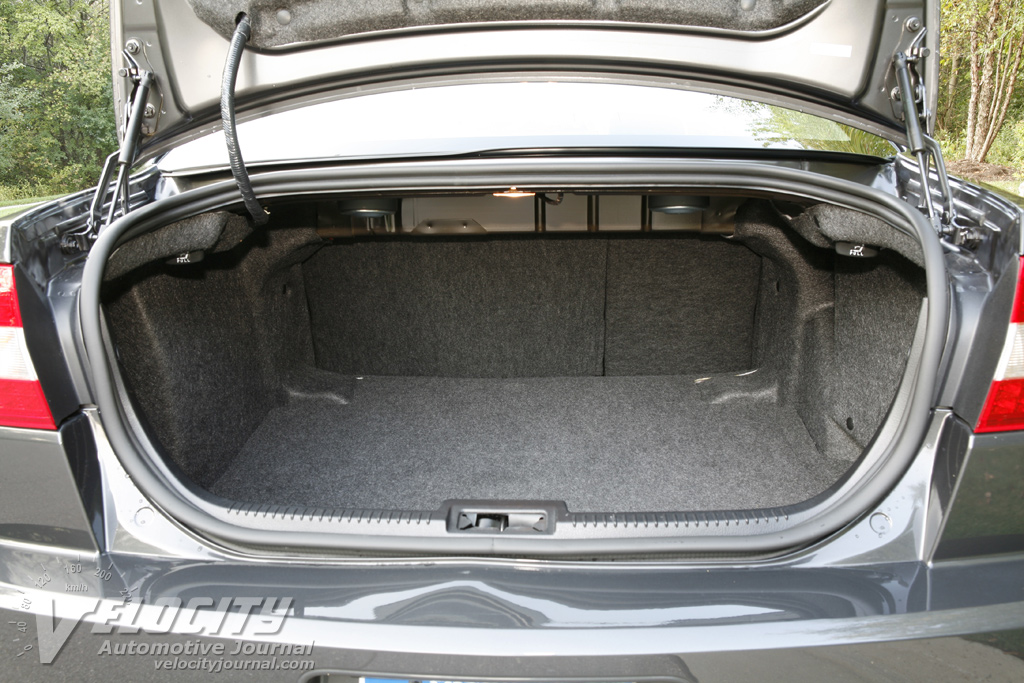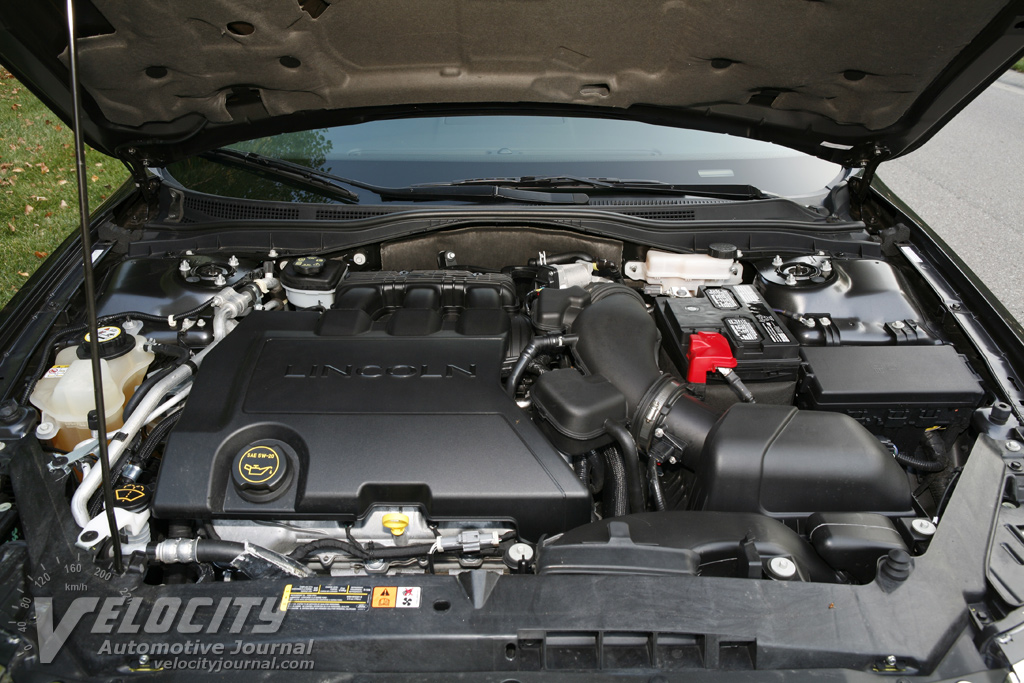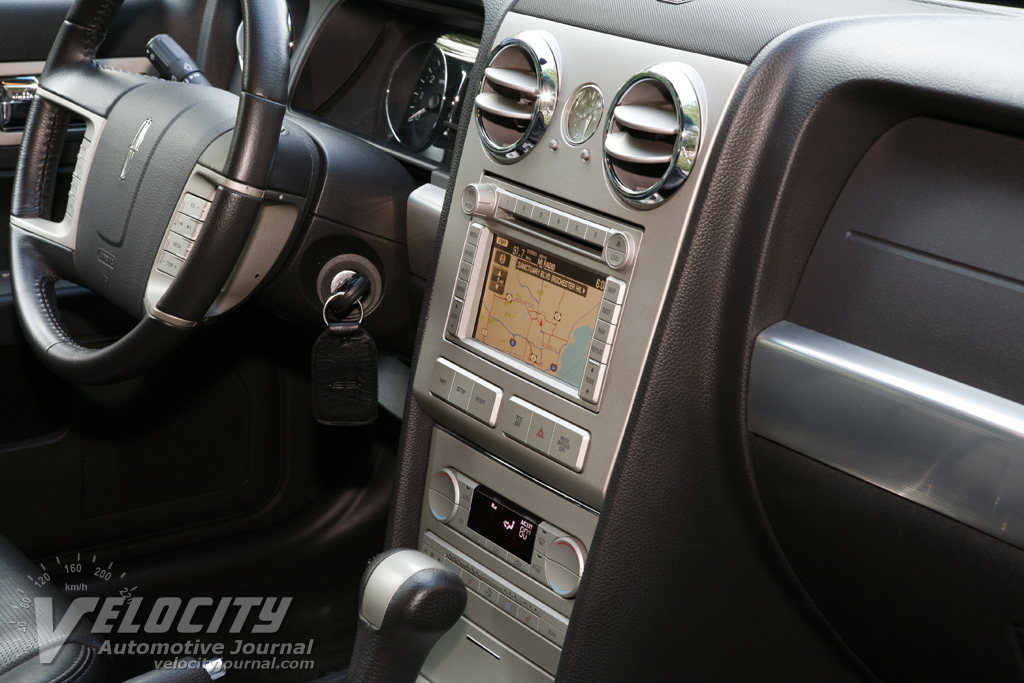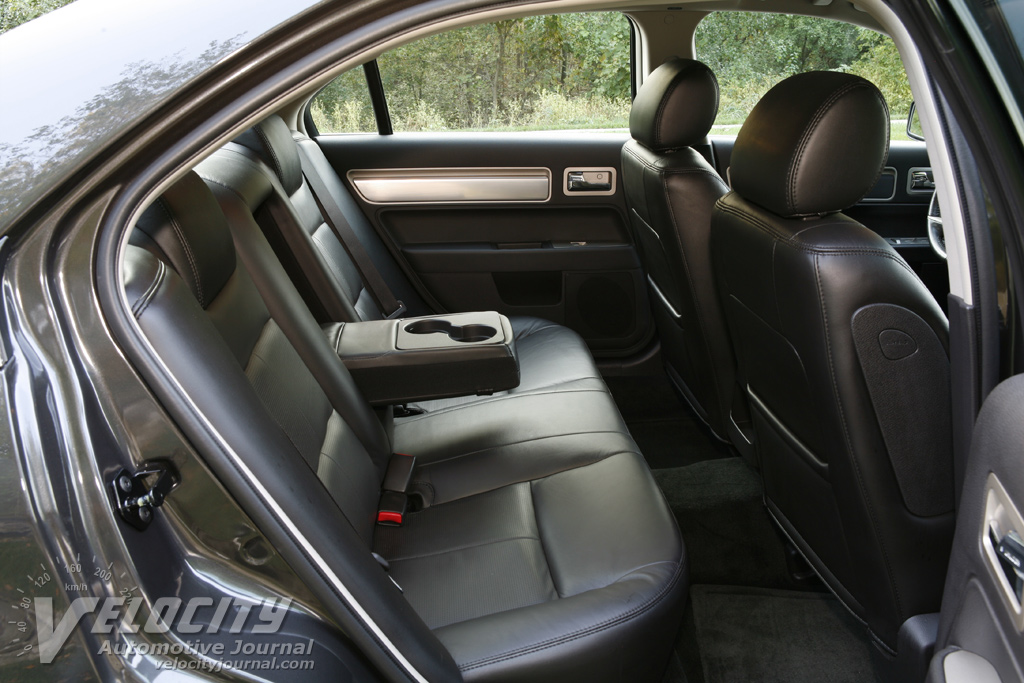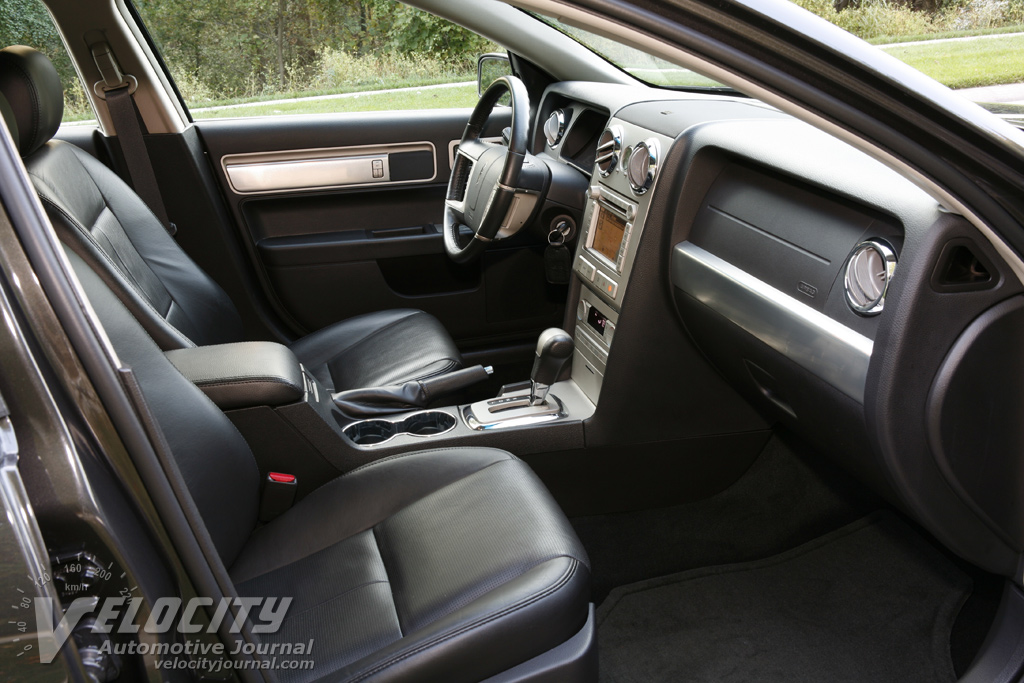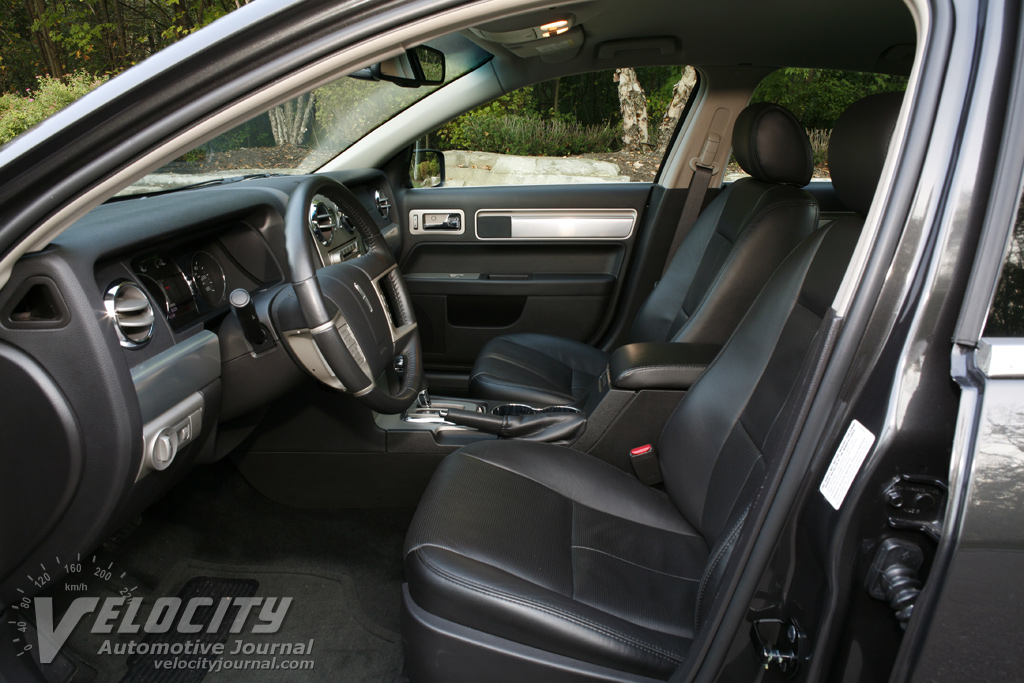2007 Lincoln MKZ AWD
10/08/2007
Shahed Hussain
The Lincoln MKZ supersedes the short-lived Zephyr, which shared the same platform and design, but had a smaller 3.0L V-6 (shared with the Fusion and Milan). Although the MKZ isn't a direct replacement for the larger Lincoln LS, it fills the role of its predecessor as the midsize sedan in the Lincoln lineup. Competitors to the MKZ include the Lexus ES350, Volvo S60 and Acura TL, although only the Volvo offers available AWD. Other alternatives include the BMW 3-Series, Lexus IS, Infiniti G35 or Cadillac CTS, although these sedans are smaller and more overtly sporty than the Lincoln.
The MKZ's sole powertrain is a 3.5L V-6 coupled to a 6-speed automatic, with a choice of FWD or AWD drivetrains. We tested a moderately optioned 2007 MKZ AWD ($31,050) equipped with heated/cooled front seats ($495), HID headlamps ($495), Sirius satellite radio ($195), interior satin/aluminum package ($195), and navigation system ($2,495). Add destination/delivery ($715) for a grand total of $35,640. A 2008 MKZ AWD starts at $32,425, although when similarly equipped the sticker price rises to $36,745. Given our preferences, we would skip the navigation system (substituting a less expensive portable system), and add the $1,200 Moonroof package. The total would be $36,040, which is a bit more than our 2007 test vehicle.
Our dark gray (Alloy Clearcoat Metallic) test vehicle had an understated charcoal interior. We were impressed with the appearance of the optional satin aluminum trim, which has a polished sheen that complements the circular chrome-rimmed vents. Most interior trim is soft-touch plastics, in keeping with the upscale mission of the MKZ. To brighten up the predominantly dark gray interior, metallic silver trim adorns the center stack and doors. The 7,000 RPM tachometer and 120 MPH speedometer have backlit white-on-black markings. A central trip computer display shows fuel consumption and other information; above it are small fuel and coolant gauges. The leather-wrapped steering wheel feels substantial; cruise control, HVAC, and audio system buttons nestle between the spokes. A small covered bin on the dash will hold sunglasses or a mobile phone. Below the center console armrest are additional storage bins; the deeper bin will store compact discs, and includes an auxiliary input, audio cable, as well as a 12V outlet. Another 12V outlet is conveniently located at the bottom of the center stack. Dual cupholders are located on the center console, behind the transmission shift lever. Overall, the MKZ exhibits impressive interior build quality, comparable to other luxury sedans in its class.
As befits a luxury sedan, the MKZ includes standard perforated leather seats and leather-wrapped steering wheel. The 10-way power adjustable front seats (including power lumbar support) accommodate a variety of physiques, but the bolsters are too flat to provide much support. We also found that the seats could use more lumbar support; a deficiency especially noticeable on long road trips. On a positive note, the leather seats are heated and cooled (with three fan settings); air circulates between the perforations to evaporate moisture and keep the driver and front passenger comfortable. During our test in early October, we drove the MKZ from Detroit to Chicago, and the cooled seats kept us comfortable during the entire trip.
The optional navigation system includes a rectangular LCD touch screen that also controls the audio system; additional buttons that surround the LCD provide direct control of some common functions. We found the route guidance feature to be effective and logical, but the zoom function was especially annoying, as the fingertip-sized touch screen button is too small to be used while driving. Based on our experience, the navigation system interface would be more effective with dedicated zoom buttons. Unfortunately, the AM/FM/6-CD audio system also relies on the overly complex touch screen for many controls. Nonetheless, the superb 10-speaker THX-II certified system has the clarity and volume to satisfy most audiophiles.
Since our test vehicle was not equipped with the optional moonroof, headroom was plentiful in front and rear for passengers up to 6-ft. tall. The rear seat cushions are generously sized, while the footwell offers ample legroom if the front passengers cooperate. The 60/40 split folding rear seats allow extra cargo hauling flexibility, while the center armrest folds out to reveal two cupholders.
The Lincoln's 3.5L Duratec V-6 is a capable powerplant; with 263-bhp @ 6,250 RPM and 249 lb.-ft. @ 4,500 RPM, this DOHC V-6 is tuned for midrange and high RPM power. Throttle response below 2,000 RPM is adequate, but the short-stroke V-6 becomes livelier as the tachometer needle sweeps towards redline. The 3.5L engine is smooth and refined through the rev range, and never becomes thrashy like its smaller 3.0L cousin in the Fusion and Milan.
Coupled to the V-6 is a standard 6-speed automatic with closely spaced ratios for the first four gears; 5th and 6th gears are for maximum fuel economy. At 80 MPH, the V-6 is spinning at a relaxed 2,400 RPM in 6th gear, which improves highway fuel consumption. As in many other Ford vehicles, the 6-speed automatic has minimal manual control options. The first two ratios are accessible via the "L" detent on the shifter; the remaining four ratios cannot be selected manually. This is a surprising omission since the Lincoln's major competitors have automatics with a full manual mode. Fortunately, the 6-speed automatic kicks down swiftly when required; overall shift quality is exceptionally smooth, even at full throttle.
With its extra weight and driveline drag, the all-wheel drive MKZ suffers a slight MPG penalty vs. the front-wheel drive model. We averaged 22 MPG in city driving; highway mileage was 25 MPG at 80 MPH. According to the EPA, the 2007 Lincoln MKZ AWD is rated 18/26 MPG city/highway, compared to 19/27 MPG city/highway for a FWD MKZ. The slight fuel consumption penalty may dissuade some customers, but we suspect that Lincoln's affluent demographic will appreciate the handling and traction advantages of AWD.
Although Lincoln has not really marketed the MKZ as an overt sports sedan, its chassis underpinnings are surprisingly capable. While many entry luxury sedans use MacPherson struts for the front suspension, the MKZ substitutes a short/long arm setup, paired with a multilink rear suspension. Front and rear stabilizer bars are standard on all MKZ models: 24 mm diameter (front) and 17 mm diameter (rear). The solid platform allowed the engineers to tune the Lincoln's suspension for flat cornering, without detracting from a controlled, yet compliant ride; dive and squat are minimal in normal driving. The suspension absorbs severe road impacts without losing its composure; at 90 MPH on bumpy freeway surfaces, the MKZ remains stable and composed. Compared to the nearly identical Fusion SEL AWD we recently tested, the MKZ has slightly softer suspension settings for a more relaxed ride.
The Lincoln's AWD system ensures that torque steer is nearly nonexistent: only a slight twinge is felt through the steering wheel during full throttle acceleration from a standstill. We found no evidence of torque steer in any other normal driving conditions, as the AWD system seamlessly transfers torque to the rear wheels as required. Drivers accustomed to squirming front wheels will be relieved to find that the MKZ simply goes where pointed. Even though the steering provides adequate feedback, it feels more isolated compared to the nearly identical Ford Fusion. Despite mild understeer at normal speeds, the 61/39 front/rear weight distribution prevents the AWD MKZ from feeling as lively as a RWD sedan. However, drivers accustomed to the relentless understeer of most FWD sedans will find this Lincoln's handling to be pleasingly balanced.
All MKZ models are equipped with 4-wheel discs (11.77"/10.98" diameter F/R) with standard EBD (electronic brake force distribution) and standard ABS (4-sensor/3-channel). Pedal feel is rock solid, with no dead spots or sponginess. Standard 17-inch alloy wheels are shod with P225/50VR17 Michelin Energy MXV4 all-season tires. At 80-90 MPH, the MKZ stays quiet and unruffled; making it an excellent choice for relaxed road trips. Overall dry weather grip from the Michelins is unexceptional, as these tires are tuned for a quiet ride and long tread life. Summer performance tires would undoubtedly improve handling, but owners in colder climates would need a separate set of winter tires for snow and ice.
The Lincoln MKZ occupies the top spot in Ford's lineup of midsize sedans, above the Mercury Milan and Ford Fusion, which share its platform. The lesser sedans are also available with AWD, but only the MKZ gets the larger 3.5L V-6, instead of the 3.0L available on the Milan and Fusion. The question for potential MKZ customers is whether the Lincoln offers enough cachet and luxury features to justify its $4-5K price differential over its corporate siblings. Compared to the Acura TL and Cadillac CTS, the Lincoln MKZ is less sporty, although its all-wheel drive offers more balanced handling than the Acura. Ultimately, the MKZ is handicapped by a crowded field of competitors, and its lack of name recognition in the marketplace; few customers are aware that Lincoln has an entry luxury sedan that competes with the better known alternatives from Lexus, Cadillac, and Acura. In the crowded entry luxury segment, the MKZ is a competent sedan overshadowed by its more established rivals.

